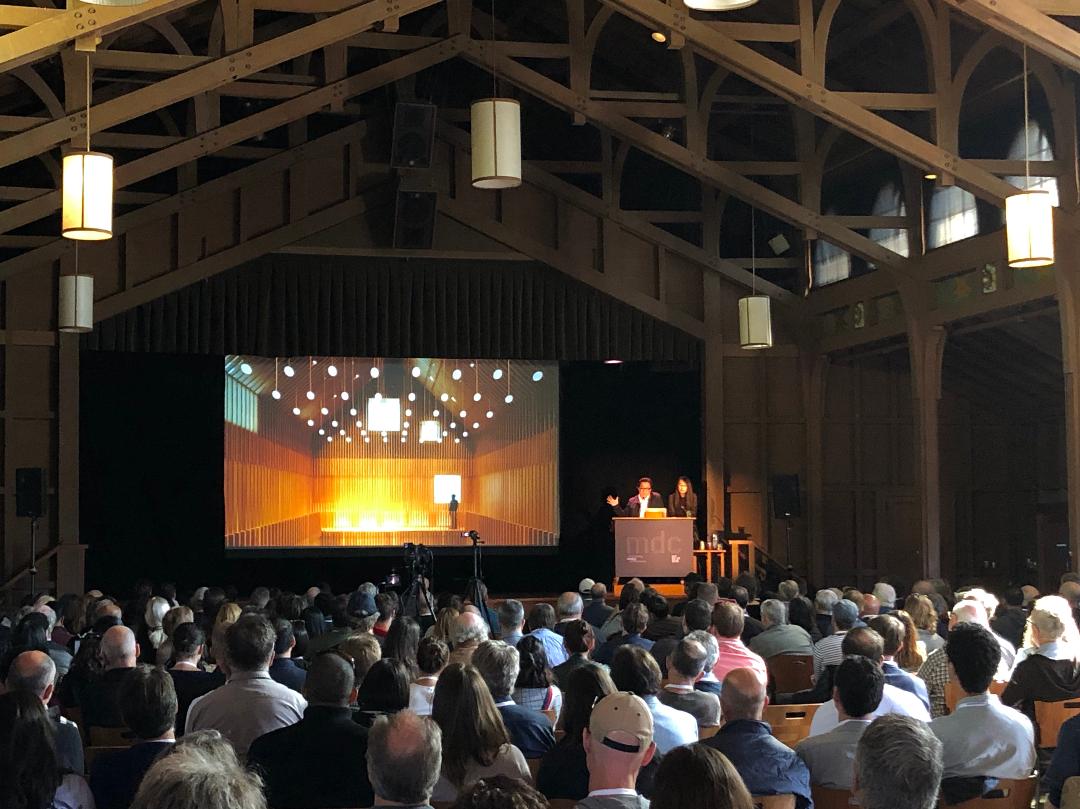For the first time in 20 confabs the Monterey Design Conference, the AIA California Council’s bi-annual gathering of architectural talent and inspiration, didn’t follow a theme. One participant said that this year’s event was about materiality and light; others talked about science, optimism, and the potential of the future. The organizers did an excellent job reaching out to diverse voices and knew that each attendee would concoct their own theme. After many years the event has evolved to the point it doesn’t need too many impositions.
I always try to attend the Emerging Talent sessions, where new voices get a chance to share their work and process. The audience was treated to, and sometimes baffled by, the robots of Andreas Froech (of Machineous), the connections between architecture and biology from Andrew Kudless (of Matsys), and the research questions of Rael San Fratello (loved their simple graphics!). At least Johnston Marklee had some buildings to show. But the theme that emerged from these largely academic architects was that research is going to become more important as architects expand their roles in a shrinking economy. An urgent sense of inquiry permeated all their work.
Some of architecture’s new shooting stars laid bare their methodologies, like recent MacArthur Genius grant winner Jeanne Gang, who showed how research and academic exploration can result in powerful projects. For a new project in Hyderabad, India, her firm is trying to create a million-square-foot residential project using bricks, airflow, and traditional courtyard shading devices. Closer to home, their work in Chicago’s Lincoln Park Zoo Boardwalk includes collaborating with experts in several disciplines to revitalize what was a decorative pond. They have also finished a turtle-like wood pavilion that has become the preferred site for architect weddings.
Among other things Michael Maltzan shared his numerous, and varied projects for Skid Row Housing in LA. Certainly this is one architect who is unafraid of the power of design, even when the project’s budget is very modest. An upcoming project for the organization includes the production of prefabricated modules stacked separately above a large central armature, a construction that will save significant time and money as well as being energetically original. Certainly architects will have to think like this in order to stay relevant in these difficult times.
Over the years one of the successes of the conference has been its ability to bring international talent to shake things up. That role this year was played by the refreshingly optimistic Borja Ferrater, the son of the well-known architect, Carlos Ferrater. He practices with his father, sister, and brother-in-law in the firm Office of Architecture in Barcelona. His firm’s Botanical garden in Barcelona was a lesson in how humility can create greatness. In the beginning the architecture was primary and the plants were the ornaments. But over time the plants became primary and the architecture became the ornament. How many architects seem pleased to see their work disappear?
If there was a theme to be found it was that architecture has to be bold to be relevant. While boldness may often require audacious design and new ways of thinking, we learned throughout the conference that it may also be served by humility—to the profession, to clients and to others. We saw that other practitioners from the fields of science, geography, landscape, literature, and art help make better environments. We have to remember to be quiet to hear them.
Kenneth Caldwell is a San Francisco-based writer and communications consultant.








